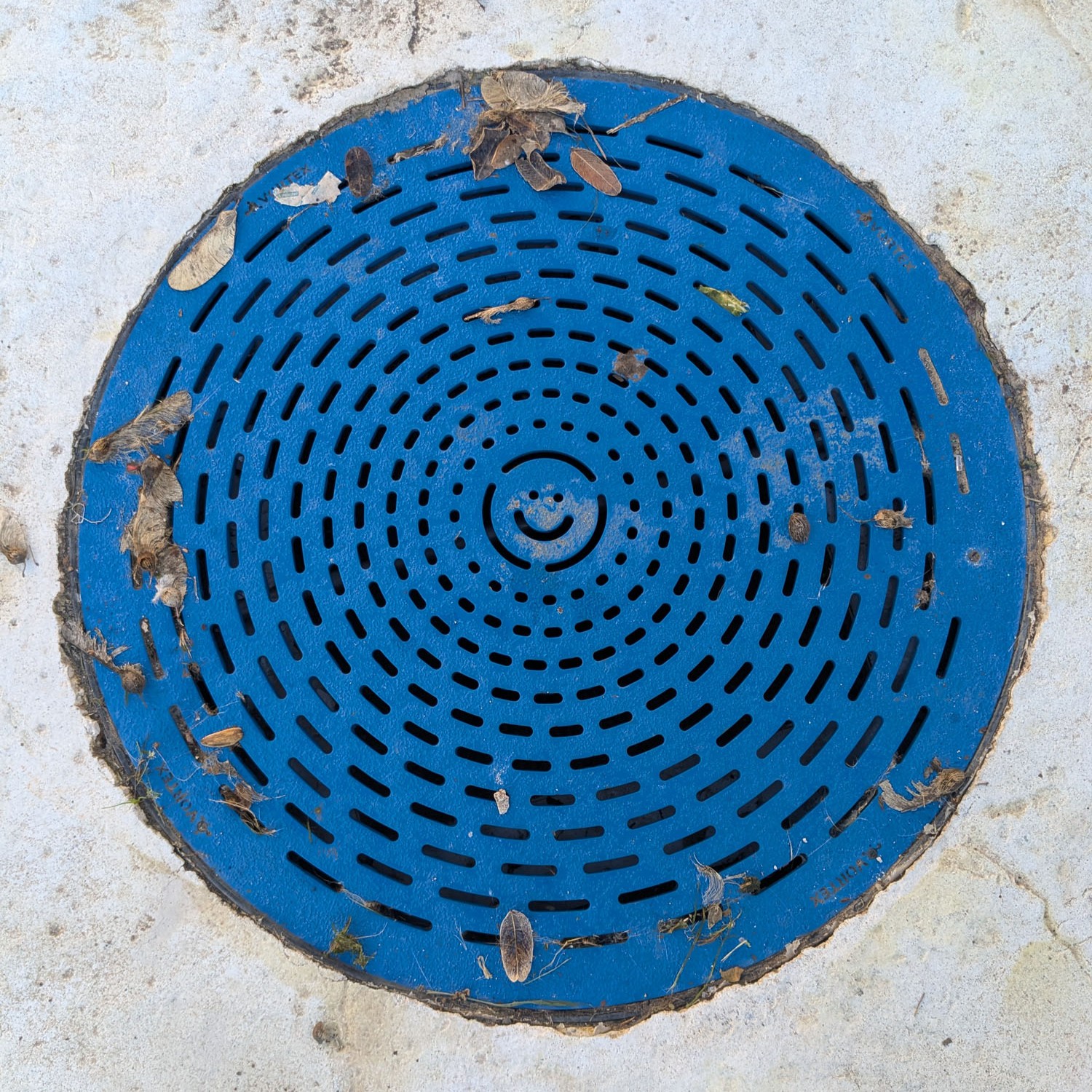21 manholes curated in 24 hours on the seaside streets of Spain’s Costa del Sol. With my wife back in the U.S. for a bit I drove from our expat home in Córdoba, to the Costa del Steel, in search of some industrial art you can walk on. And photograph.
I’ve determined to share two shots per cover: 1) the MHC, highlighted at center, and 2) the street view where the MHC lives. I’ve added some commentary, but I’m doing my best not to suggest too much about the findings since I’m not terribly knowledgable in the art and science of manhole covers just yet.
If manhole covers are not your cup of sTeel, I will be sharing another Los Dos post that focuses on the the more above-ground aspects of the trip. Plus Ella, my ever-present canine compadre when prowling the streets with a phone camera. So stay tuned for that.
Motril


Salobreña
Salobreña is about 8 km west of Motril and a good deal smaller than its neighboring town. Yet, richer in steel enticements, I found. And mystery.






Velilla-Taramy
I made one more stop along the coastal road on my way to Estepona, my destination for the night. Velilla-Taramy is a village of about 3,000 people. I was here, paused in my passage west, because I felt like I should go and check on the Mediterranean sea, the actual beach, which I’d so far neglected in favor of the siren song of the streets of steel. But the village kindly offered up a manhole cover on the way to the playa.


Estepona
The section of the Coata del Sol I sampled was honestly a little dispiriting in that it was mainly highrise after highrise by the endless beach. I wasn’t expecting anything, to be honest, but miles upon miles of decidedly not small Spanish towns was what I found. And more than one traffic jam heading to Estepona.
I hadn’t really put much thought in the logisitics of this quick trip south, to be sure. Motril and Estepona are equidistant from Malaga, which is a more or less 2-hour cruise north up the A-45 Autovia to Córdoba. My goal was to cover some coastal towns in this range.
It turns out my hotel was quite a ways from the old part of Estepona, in a part of town that was newer but which had already seen better days. I took Ella to the beach, where I found some decaying shuttered cabanas. And an old manhole cover being eclipsed by an old planter.


I was feeling like we were not off to a good start in Estepona. But in the morning we got in the car and drove the 10km to town center, which was a completely different picture.









Marbella
Like the other towns on the Costa del Sol, Marbella had its condos in the sky along the beach. But more than that. A real Spanish city full of history, a km inland, that predated the invention of sun block in a bottle. My disappointing drive along the coast highway became a little love affair when I walked the old town center in search of ground-bound metal plates.











Malaga
On to Malaga. Final stop before heading norte to Córdoba. I would not have guessed I’d spot more interesting covers in Marbella than in any other town I’d breezed through. But Malaga also had its share of both the mundane and the intriguing.






And so our blazing tour of the Costa del Steel comes to a close. Hope you enjoyed one or two finds from the vieja. Please do add a comment if you can help shed light on some of the mysteries introduced here.
Saludos!


6 responses to “La Costa del Steel – Manholes, Mysteries & Musings”
Very cool Gary. I’ll have to pay more attention to manhole covers, but I doubt I will find any as interesting as the ones you have found. Toodles and keep on carrying on with interesting and insightful blog
Thanks much, April. Glad you’re enjoying it!
https://i0.wp.com/demenshea.com/wp-content/uploads/2025/03/20-cover-malaga-PXL_20250328_115936096.jpg?resize=1024%2C1024&ssl=1
Which came first – the sidewalk or the MHC? I so want to rotate that cover 45° so it aligns with the pattern of the walk. Immensely enjoyed this post. Putting the toe of your shoe in the shot for scale is a good choice. Keep looking down.
The manhole cover begot the sidewalk. Lest one would have to jump from cover to cover. If we rotate 45 degrees you’ll crane your neck trying to read the circle of steel. So I saved you that trouble. So nice to see you, my friend!! I hope you’re doing well. We’re venturing on as ever.
Hi Gary, just got back from Seattle watching my Detroit Tigers beat the Mariners. Manhole covers, dear to my heart. Believe it or not when I was growing up in Detroit I would collect the street coins. The D has been around since 1701 and also had the first Xpress way in the US. Us kids would go to the scrap yards and find classic covers from Victorian, Deco, on and on. The big problem was they are tough to hang on the walls. The plaster was blasted from the weight. So we would make patios out of them, covers all the weeds and I didn’t have to mow so much lawn. Worked great. Created 3rd degree burns on bare feet in the summer but looked really cool. Beautiful foundry art and great weight for scrap metal prices. So yeah, love those photos. Like the hinged ones, rare items. Need more hints on the two covers you compared. Carry on amigo. Have a Pilsner on me. Jim
Wouldn’t ya know… that sounds like a cool past time for a Detroit kid. I grew up in Chicago, but we never managed to notice those steel discs underfoot. As to the two not quite identical covers, check em out side by side. https://www.facebook.com/share/p/1FFjt34KMe/ Cheers on the cerveza… owe you one.